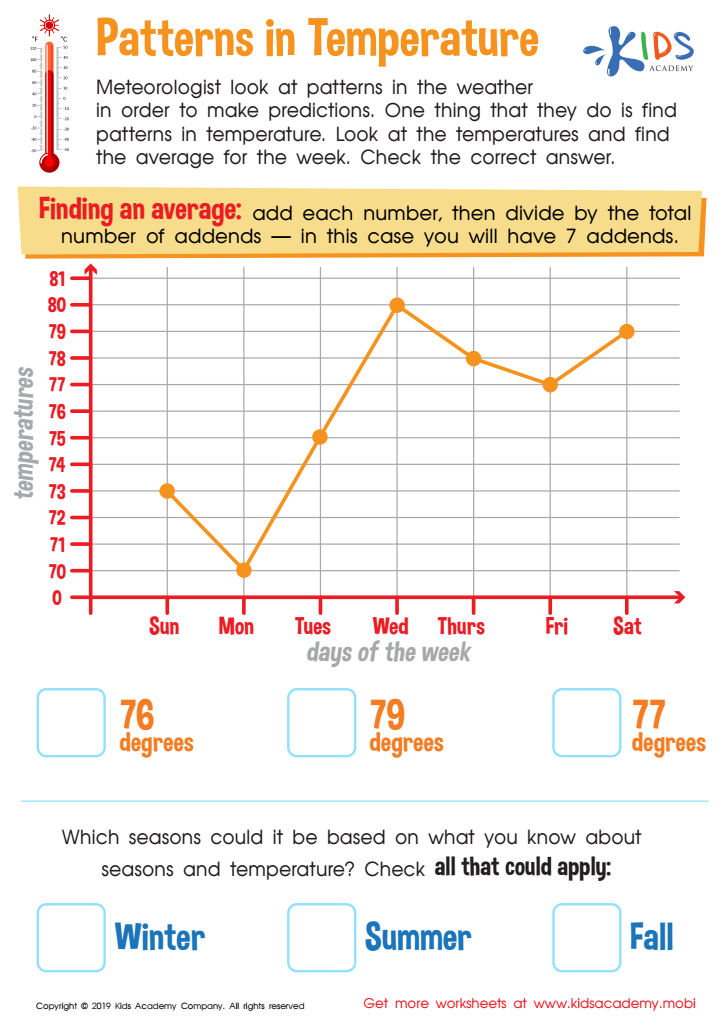Analyzing data Normal Science Worksheets for Ages 7-9
5 filtered results
-
From - To
Explore our engaging "Analyzing Data Normal Science Worksheets" designed specifically for children aged 7-9. These worksheets foster critical thinking skills as students learn to interpret, visualize, and analyze scientific data. Perfect for enhancing classroom lessons or at-home learning, our resources guide young learners through fun activities that involve reading graphs, interpreting charts, and understanding basic data concepts. Each worksheet encourages curiosity and supports foundational scientific skills while aligning with age-appropriate learning standards. Empower your child to become a confident data analyst and spark their interest in science with these colorful and interactive worksheets. Start analyzing data today for a brighter future!


Studying Fossils Worksheet


Water Scarcity Worksheet


Patterns in Temperature Worksheet


Charting Rainfall Worksheet


Climate Maps Worksheet
Analyzing data in the context of Normal Science is essential for children aged 7-9 as it fosters critical thinking and enhances their understanding of the world. At this age, children are naturally curious, and data analysis helps them make sense of information, enabling them to form logical conclusions based on evidence. By engaging in data analysis, they learn to interpret graphs, charts, and statistics, equipping them with valuable skills for future academic pursuits.
Parents and teachers should care because this foundational skill not only supports math and science education but also builds analytical reasoning, which is crucial for problem-solving in everyday life. Analyzing data can also facilitate investigations and experiments, encouraging children to ask questions, make observations, and seek out answers. This process promotes a growth mindset, as children learn to view challenges as opportunities for learning.
Moreover, skills in data literacy empower children to participate in discussions about real-world issues, such as environmental changes and health information. By supporting the understanding of data analysis, parents and teachers can nurture informed and engaged citizens who can thoughtfully navigate complexities in their environment, contributing positively to their communities. Investing in these skills early creates a strong foundation for lifelong learning.
 Assign to My Students
Assign to My Students



















